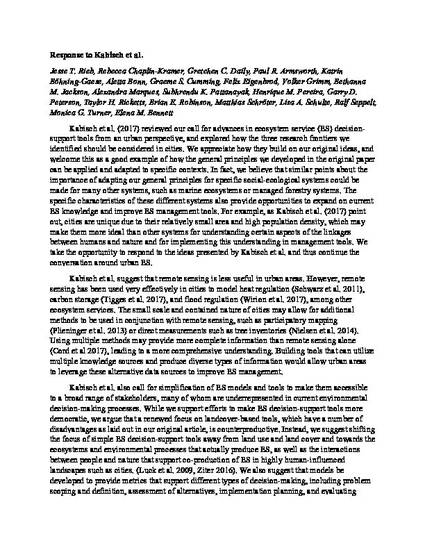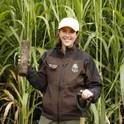
Kabisch et al. (2017) reviewed our call for advances in ecosystem service (ES) decisionsupport tools from an urban perspective, and explored how the three research frontiers we identified should be considered in cities. We appreciate how they build on our original ideas, and welcome this as a good example of how the general principles we developed in the original paper can be applied and adapted to specific contexts. In fact, we believe that similar points about the importance of adapting our general principles for specific social-ecological systems could be made for many other systems, such as marine ecosystems or managed forestry systems. The specific characteristics of these different systems also provide opportunities to expand on current ES knowledge and improve ES management tools. For example, as Kabisch et al. (2017) point out, cities are unique due to their relatively small area and high population density, which may make them more ideal than other systems for understanding certain aspects of the linkages between humans and nature and for implementing this understanding in management tools. We take the opportunity to respond to the ideas presented by Kabisch et al. and thus continue the conversation around urban ES.
Available at: http://works.bepress.com/lisa_schulte/79/

This is a manuscript of a response published as Rieb, Jesse T., Rebecca Chaplin-Kramer, Gretchen C. Daily, Paul R. Armsworth, Katrin Böhning-Gaese, Aletta Bonn, Graeme S. Cumming et al. "Response to Kabisch and Colleagues." BioScience 68, no. 3 (2018): 167-168. doi:10.1093/biosci/bix154. Posted with permission.